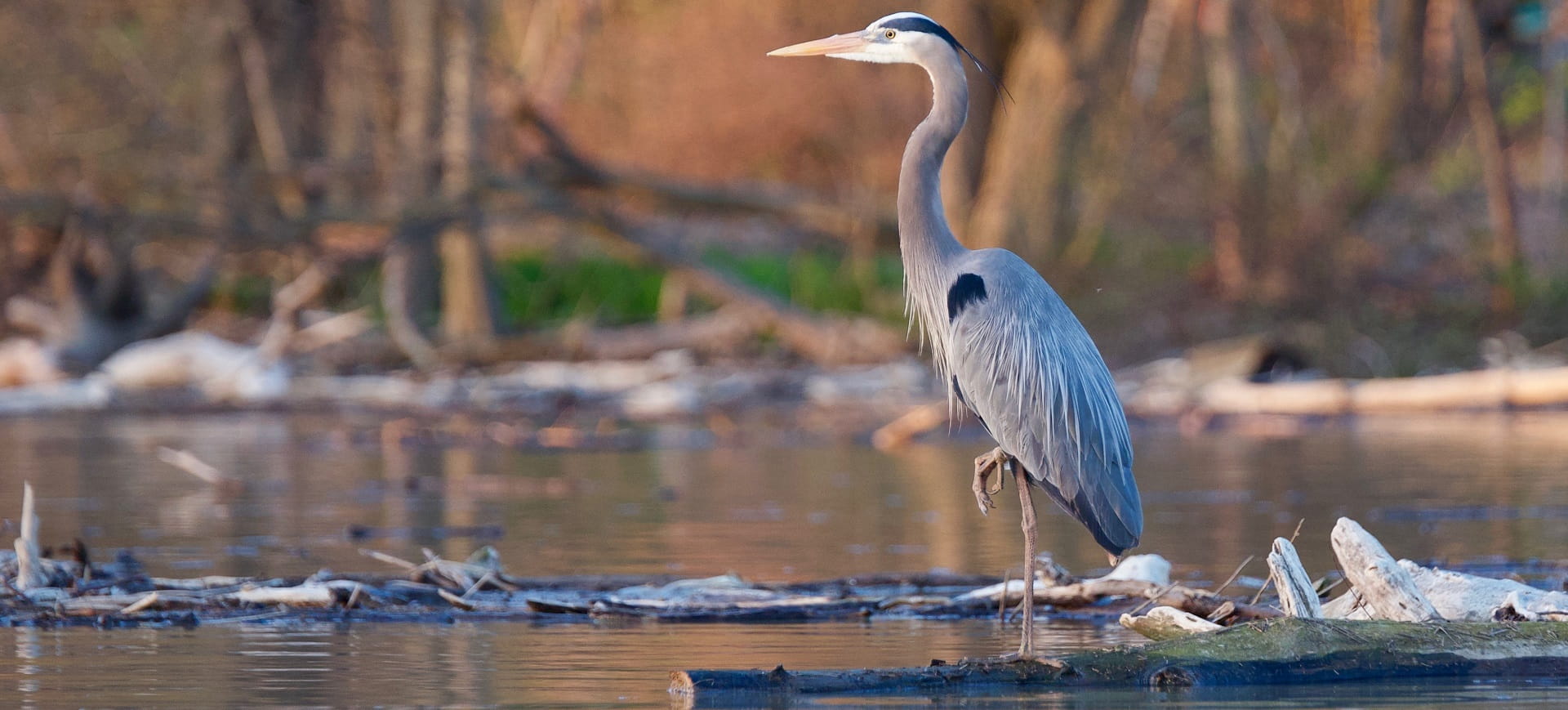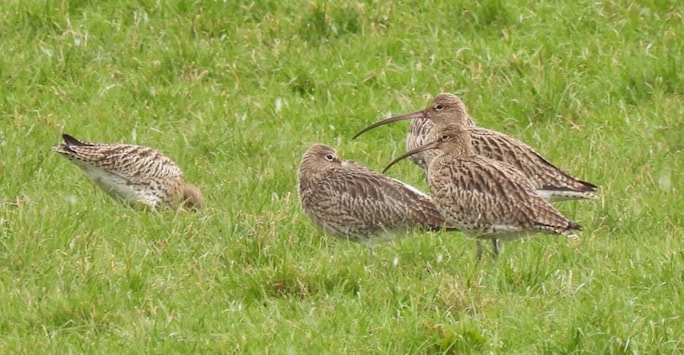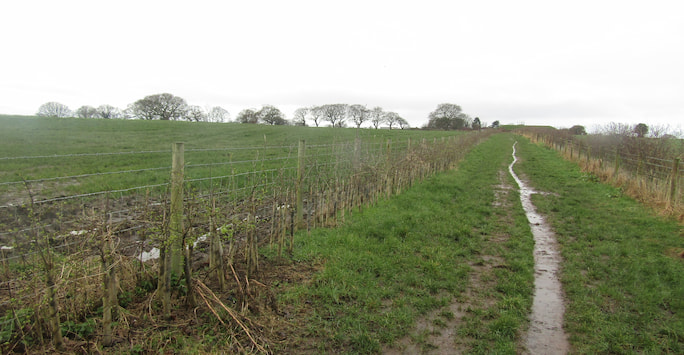
- University home >
- COP28 >
- Biodiversity and Sustainability on our farms: Ness Heath and Wood Park
John Cameron, farm manager of Wood Park and Ness Heath, speaks about current progress from their work to improve farm sustainability and biodiversity.
For years Wood Park farm and Ness Heath have run as commercial enterprises with 200 dairy cows, 450 breeding sheep, 60 beef animals and 25 breeding sows, always being used as practical teaching sites for the vet students, trying to reflect contemporary farming practices to ensure they have been exposed to industry norms. Both farms are also used for research work, e.g. lameness at Wood Park, and fluke studies at Ness Heath.
The farms consist of 450 acres of land which is a mixture of permanent grassland for the sheep and rotational crops grown to feed the cows- grass, maize and wheat. It has a number of ponds and woods. The Wirral way and cuckoo lane run through the farms. Both are lined with trees and hedges and have an abundance of wildlife in them.
Farming generally has a huge impact on how the land looks and the wildlife on it, not to forget that the farm buildings are home to swallows, sparrows, chaffinches, bats and mice. The compromise is how to farm commercially and enhance the countryside from a biodiversity perspective, can it be done?

As I’ve got older I’ve appreciated the world around me more and can identify any number of birds now whereas 15 years ago it was either a crow or a sparrow. Arguably I am more sympathetic to looking after wildlife than I may have been in the past
The milk from the Wood Park cows is sold to Tesco (all 2.7 million litres/year) which formed a dedicated group of farmers to supply their milk in return for measurable standards of welfare, hygiene, responsible antibiotic use and lately for having a biodiversity plan that is actioned. This includes planting hedges, and trees, and creating habitats for swifts, swallows and house martins. It’s something that Tesco do that few people outside the industry are aware of.
Historically the Government paid a subsidy to farmers for producing food (dating back to after the second world war when food supplies were short) and has never really stopped doing this despite 70 plus years of changes. However there have been changes recently, money will be paid out for biodiversity work only (public money for public good as it’s called now) which has to be applied for. This will include planting hedges, putting in beetle banks, planting herbal leys, and not leaving the land bare by planting cover crops
The local council will help fund the regeneration of ponds and the planting of wildflower meadows.
.jpg)
We have always managed the farmland in a sympathetic way with rotational cropping, soil testing and putting lots of farmyard manure on fields to enhance the humus content of the soils. We also manage the land for maximum production, using fertiliser, sprays and liming as required. There wasn’t a point at which we decided to become more wildlife-friendly but 7 years ago decided that instead of repairing an old fence along a footpath to plant a hedge mainly to separate the path from the field so that walkers kept to the footpath, the following year another hedge was planted on the other side of the footpath. This has grown to over 2 m tall and now provides a corridor for birds such as goldfinches to live. We then planned to plant around 200 meters of hedge per year wherever there were gaps in the fence lines. The first hedges were just hawthorn but we become more adventurous and planted mixed species and then included trees every 30 metres in every hedge.
Picture: Hedge plant in 2017

Picture: Hedge plant in 2019
.jpg)
Picture: Hedge plant in 2022
.jpg)
By the time the government/Tesco/council offered incentives for biodiversity items we had already planted nearly 1 km of hedges and 90 trees and so became on-trend! This year we have planted 600 metres of hedges and 60 trees.
One pond has been rejuvenated by clearing all the trees around it. Between the leaves falling in the water, increasing the nutritional value which decreases the Ph of the water which kills off pond life and restricts the amount of sunlight getting to the water to clean it. It has been dredged to clear out the silt. Hopefully, life will return now to the pond. The council come and test the water annually and ask for photos of work done
At the moment we are looking to plant a 6-acre wild meadow as part of the work with ‘The friends of lees lane ponds’. This is a 30-year agreement with the council which will help to fund its establishment. We will mow and bale it once a year.
Really this is just the start of a long-term programme which will evolve as time moves on. There will be a pond per year rejuvenated over the next 7 years. There’s a beetle bank to construct as well as more trees and hedges to plant.
We are more accustomed to managing cows and sheep and acknowledge that we are not experts in biodiversity but with help from a number of people in the council, biodiversity consultants and University we are well on our way.
As I’ve got older I’ve appreciated the world around me more and can identify any number of birds now whereas 15 years ago it was either a crow or a sparrow. Arguably I am more sympathetic to looking after wildlife than I may have been in the past
The milk from the Wood Park cows is sold to Tesco (all 2.7 million litres/year) which formed a dedicated group of farmers to supply their milk in return for measurable standards of welfare, hygiene, responsible antibiotic use and lately for having a biodiversity plan that is actioned. This includes planting hedges, and trees, and creating habitats for swifts, swallows and house martins. It’s something that Tesco do that few people outside the industry are aware of.
Historically the Government paid a subsidy to farmers for producing food (dating back to after the second world war when food supplies were short) and has never really stopped doing this despite 70 plus years of changes. However there have been changes recently, money will be paid out for biodiversity work only (public money for public good as it’s called now) which has to be applied for. This will include planting hedges, putting in beetle banks, planting herbal leys, and not leaving the land bare by planting cover crops
The local council will help fund the regeneration of ponds and the planting of wildflower meadows.
We have always managed the farmland in a sympathetic way with rotational cropping, soil testing and putting lots of farmyard manure on fields to enhance the humus content of the soils. We also manage the land for maximum production, using fertiliser, sprays and liming as required. There wasn’t a point at which we decided to become more wildlife-friendly but 7 years ago decided that instead of repairing an old fence along a footpath to plant a hedge mainly to separate the path from the field so that walkers kept to the footpath, the following year another hedge was planted on the other side of the footpath. This has grown to over 2 m tall and now provides a corridor for birds such as goldfinches to live. We then planned to plant around 200 meters of hedge per year wherever there were gaps in the fence lines. The first hedges were just hawthorn but we become more adventurous and planted mixed species and then included trees every 30 metres in every hedge.
By the time the government/Tesco/council offered incentives for biodiversity items we had already planted nearly 1 km of hedges and 90 trees and so became on-trend! This year we have planted 600 metres of hedges and 60 trees.
One pond has been rejuvenated by clearing all the trees around it. Between the leaves falling in the water, increasing the nutritional value which decreases the Ph of the water which kills off pond life and restricts the amount of sunlight getting to the water to clean it. It has been dredged to clear out the silt. Hopefully, life will return now to the pond. The council come and test the water annually and ask for photos of work done
At the moment we are looking to plant a 6-acre wild meadow as part of the work with ‘The friends of lees lane ponds’. This is a 30-year agreement with the council which will help to fund its establishment. We will mow and bale it once a year.
Really this is just the start of a long-term programme which will evolve as time moves on. There will be a pond per year rejuvenated over the next 7 years. There’s a beetle bank to construct as well as more trees and hedges to plant.
We are more accustomed to managing cows and sheep and acknowledge that we are not experts in biodiversity but with help from a number of people in the council, biodiversity consultants and University we are well on our way.